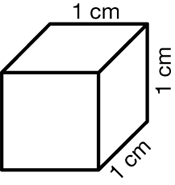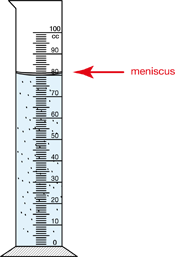|
|
Daily Practice and Problems |
Lesson |
Homework |
Assessment |
Student Books |
Student Guide |
|
|
|
|
| Student Activity Book |
|
|
|
|
Teacher Resources |
Teacher Guide - digital |
|
|
|
|
Supplies for Student Groups
container, such as a dishpan
containers of different U.S. customary sizes: cup, pint, quart, and gallon
centimeter ruler
3–4 containers of different sizes for finding volume using cubic centimeters
2 handfuls of centimeter connecting cubes
graduated cylinder calibrated no more than 2 cc apart (250 cc preferred)
eyedropper
beaker or container of water
paper towels
Materials for the Teacher
Display of first Converting Standard Volume Units Page (Student Activity Book) Page 543
Display of Scale 1 with Blowup Master (Teacher Guide)
Display of Scale 2 with Blowup Master (Teacher Guide)
Display of Scale 3 with Blowup Master (Teacher Guide)
Display of Meniscus Master (Teacher Guide)
Unit 13 Assessment Record
cup, pint, quart, and gallon containers
Materials Preparation
Standard Volume Units. Collect a set of four containers for each group: a cup, pint, quart, and gallon. Examples of containers may include: a 1-cup measuring cup; a school milk carton (1 cup); a pint-sized container from sour cream, cottage cheese, or ice cream; and quart- or gallon-sized container from milk or orange juice. When you are collecting containers, try to find containers that have the same volume but are different shapes; for example, a rectangular cardboard pint container from milk or cream and a cylindrical plastic pint container from sour cream. If the size of a container is not indicated, label the container with its standard volume.
TIMS Tip
The containers you find may not be precisely the sizes marked on the labels. Although there are four cups in one quart, for example, a container that holds a quart of milk might have extra space for air on top and might hold a little more than four cups. This will not be a problem if students round their answers to the nearest whole number.
Metric Volume Units. Collect several small containers of various sizes and shapes for student groups to use for estimating the volume of containers using cubic centimeter connecting cubes and for finding actual volume to the nearest milliliter using the graduated cylinder. Choose containers that will hold 240 ml (about 1 cup) or less. The opening in each container needs to be big enough so students can fill the container with cubic centimeter cubes to estimate the volume. You will need 3–4 containers for each group of students. Examples of containers include 4-ounce paper cups, small yogurt cups, and baby food jars.
Gather Measuring Materials for Targeted Practice in a Learning Center. Gather some of the containers used in this lesson, a container of water, centimeter connecting cubes, a graduated cylinder, an eyedropper, and some paper towels in a learning center. Ask students to measure the volume of the containers using the connecting cubes and with the water and graduated cylinder [E10, E11].
















